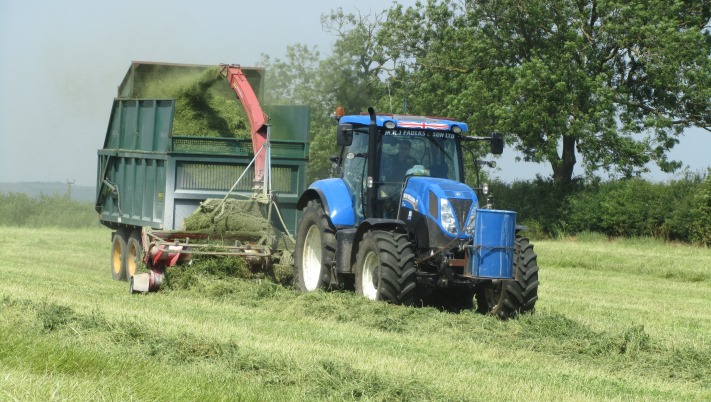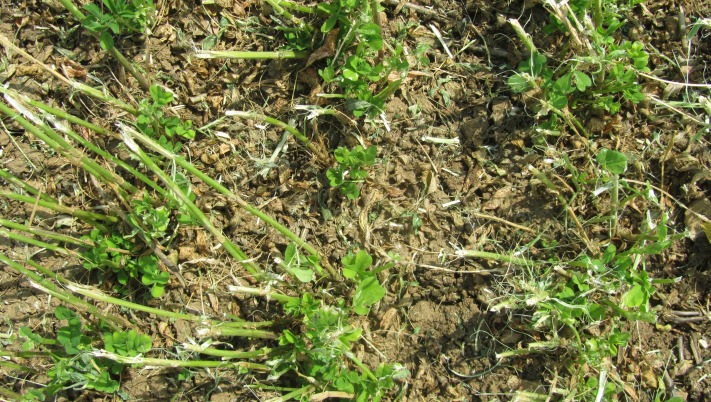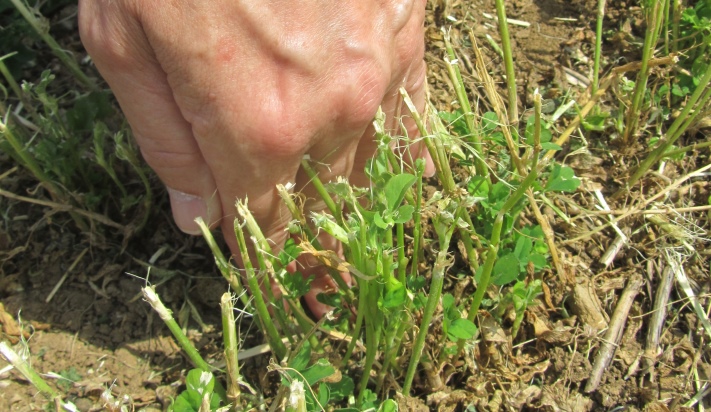Lucerne helps rid arable fields of blackgrass and provides high value feed for dairy cows
The first lucerne silage crop ever to be grown at The Grange, Hose near Melton Mowbray in Leicestershire, was harvested and clamped on the hottest day of the year (Wednesday July 1) this week.

Mixed arable and dairy farmer Ben Stroud was pleased with the first-year crop yield of 150 tonnes from 11ha (26 acres), from fields that ranged from light loam to heavy clay. No fertiliser has been applied so far, but 40t/ha (16t/acre) of slurry will be applied now after first cut.
Big blackgrass problem
“The main reason for trying lucerne was to allow us to get on top of a very bad blackgrass problem in our cereal crops,” Mr. Stroud explains.
“We drilled the variety Daisy last August after winter wheat into a good seed bed. We sprayed 2,4-DB in the autumn for broad-leaved weeds, carbetamide in late November and Kerb Flo in January, which cleared a terrible mat of blackgrass, without affecting the lucerne. Now we have cut it, we can see the base of the sward is very clean indeed.”

The 224ha (550 acre) farm grows 142ha (350 acres) of cereals including wheat, barley and oilseed rape. It also supports a dairy herd of 160 cows and followers on 82ha (200 acres) of grassland, including 16ha (40 acres) of Sabre Hi Pro, which produces high quality, high protein forage.
“We are trying to cut down on the amount of soya and sugar beet we buy, by growing more protein crops like lucerne and red clover and feeding home-grown barley. Our milk goes to a local cheese factory so increasing the butterfat and protein content of the milk is important. The lucerne also provides fibre, which is very good for rumen health.”
The lucerne harvest was two weeks later than planned due to dry conditions, which slowed establishment and crop growth in the autumn, and the cold, dry spring. It was cut with a mower conditioner that handled the crop gently to reduce the chance of leaf loss during pick-up.
“We aimed for a 48-hour wilt, but were not expecting the record temperatures on Wednesday when we booked the contractors,” Mr. Stroud admitted. “We were worried that the swath would be too dry, but in the end it was just about perfect for ensiling.”
Crop management
Mr. Stroud has been supported through his first year by lucerne specialist Rod Bonshor of Oliver Seeds.
“Ben has managed the crop exactly as it should have been, from drilling to harvest,” says Mr. Bonshor.
“He even went out to the contractor with a tape measure to make sure the mower was set no lower than 10cm (4 inches), to protect the all important growing point of the plants, and also to allow the young emerging leaflets to flourish.

"The next cut is scheduled for a month’s time, to coincide with the harvest of wholecrop wheat which will be stored in the same clamp. Round bales made from a third cut in September will be fed next May when the clamp silage has run out. This will ensure the cows have some lucerne to eat all year round.”
